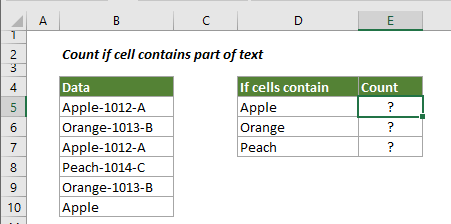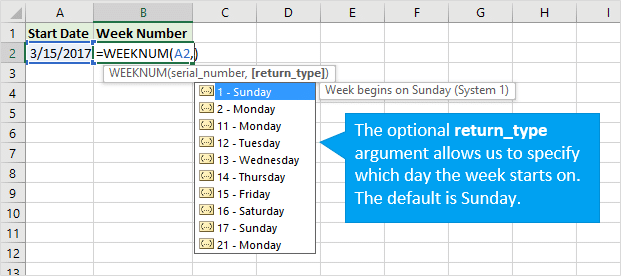
We use the $ sign to make an absolute reference – to remember that, think of a dollar sign as an anchor.įor example, enter the formula =$A$1 in any cell.

The result is shown below:Īs you can see, each new cell updates relative to the new location, so cell C4 updates its formula to =B4 + C3:Īn absolute reference does not change when you move or copy a cell. Excel updates the cell reference as you copy it. Now copy the formula in cell C3 (=B3+C2) to the rest of the column to give a running balance for our budget. Suppose we want to show our projected expenses for the month in a spreadsheet so we can make a budget.

#Mac excel formula for every four weeks how to#
Here is an example that illustrates how to copy one cell to multiple locations. This is a square area that cross rows and columns and not just part of a column or part of a row. If a range cross five columns and ten rows, then you indicate the range by writing the top-left cell and bottom right one, e.g., A1:E10. Another example (A1:AZ1) is the top row from column A to column AZ. For example, (C1:C10) means all the cells from cell C1 to cell C10. This avoids having to edit each cell to ensure it points to the correct place.īy “range” we mean more than one cell. The new formula in B2 for example, is =RIGHT(#REF!,LEN(#REF!) – FIND(“,”,#REF!) – 1) and the result is #REF:Ĭopying cells is very handy because you can write one formula and copy it to a large area and the reference is updated. So the computer does not know what you mean. It changed every reference to A2 to the column to the left of A, but there is no column to the left of column A.
#Mac excel formula for every four weeks full#
Remember from Lesson 2 where we had to split a full name into first and last name? What happens when we copy this formula? In cell C6 we type “I am C6” and now C5 displays “I am C6.” The value shown is 0 because cell C6 is empty. Instead of referring to A2, now cell C5 refers to cell C6. This means we have changed the cell it refers two across and four down. We copied the cell two columns to the right and four down. This is illustrated below:Ĭontinuing with our example, and looking at the graphic below, if you copy the contents of cell A1 two to the right and four down you have moved it to cell C5. The cell that it points to, the cell reference, changes as well. As you move it down, the row number increases. We need to add columns above and rows to the left, so we have to move the cell down and to the right to make room.Īs you move the cell to the right, the column number increases.

Now, suppose we need to make room in our spreadsheet for more data. In cell A2 we have typed “A2” so Excel displays the value “A2” in cell A1. That means Excel output in cell A1 whatever is inputted into cell A2. Let’s refer to that earlier example – suppose in cell A1 we have a formula that simply says =A2. For example, you could anchor the row reference then move a cell down two rows and across four columns and the row reference stays the same. Mixed – This means you can choose to anchor either the row or the column when you copy or move the cell, so that one changes and the other does not. the cell reference is relative to its location. Relative – Relative referencing means that the cell address changes as you copy or move it i.e. This is done by anchoring the row and column, so it does not change when copied or moved. There are three types of cell references.Ībsolute – This means the cell reference stays the same if you copy or move the cell to any other cell. The first cell in the spreadsheet is A1, which means column A, row 1, B3 refers to the cell located on the second column, third row, and so on.įor learning purposes about cell references, we will at times write them as row, column, this is not valid notation in the spreadsheet and is simply meant to make things clearer.


 0 kommentar(er)
0 kommentar(er)
